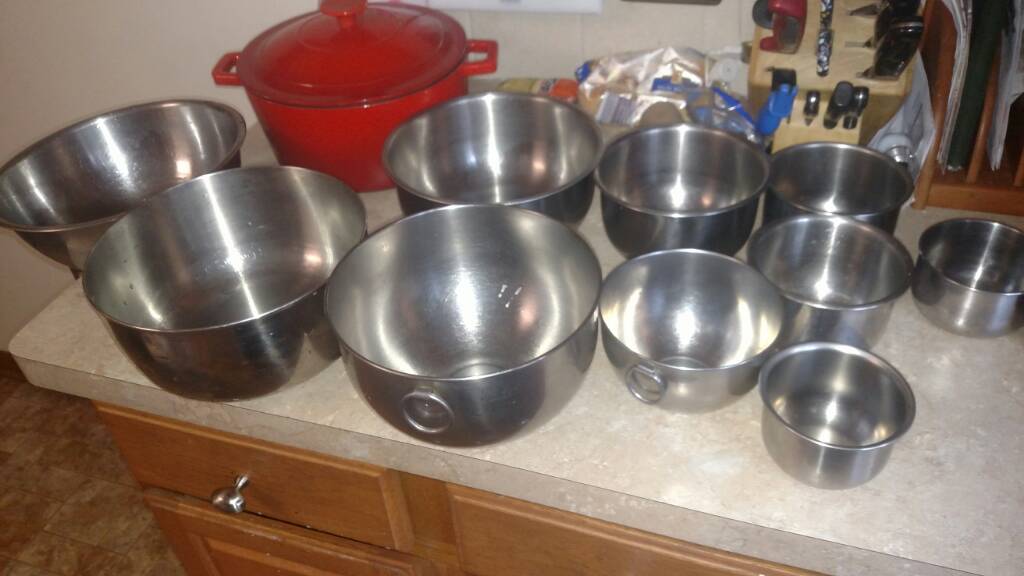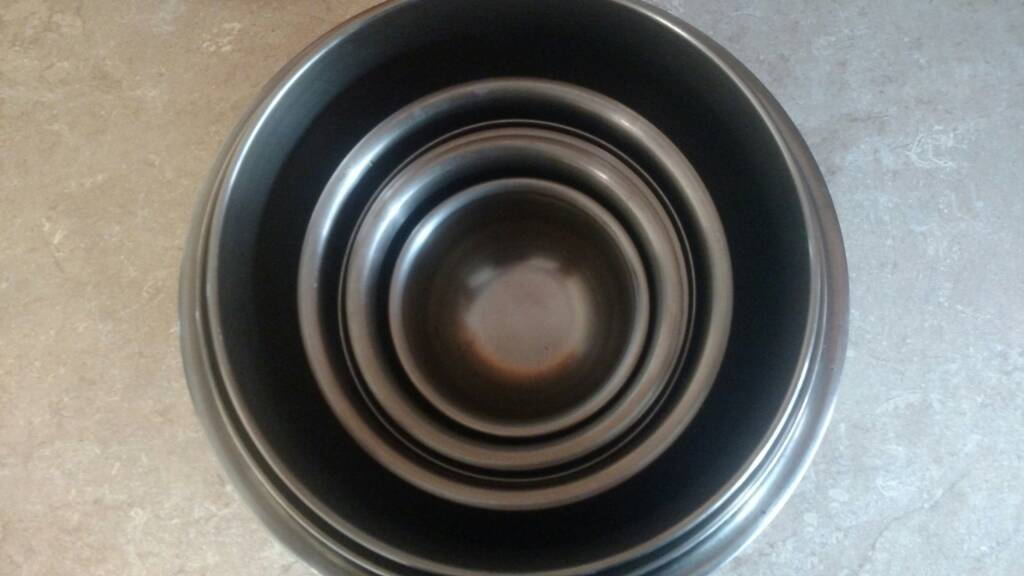Question about that; do you want the expensive rice flour from the organic section or just any will do?
All the rice flour is for is to keep it from sticking to things. Pretty much any should do.
I've read a bunch of different styles for making a starter. Pineapple juice instead of water for the first 50/50 gram mix is common. And once you start searching for videos on the subject, you find all kinds of odd approaches. They all have two things in common: Flour and water. No matter what else you add initially, it will ultimately be displaced pretty much completely after just a few feedings. In other words, a waste of time.
Sourdough was the original way to make leavened bread, and it was probably discovered accidentally. I picture some ancient baker leaving a bowl of dough out (I almost added "of the fridge," then remembered while this guy was baking his bread, the pyramids were still being built), and discovering it a few days later, looking a bit bubbly. Dude says to himself, "Well it smells off, but lets bake it anyway and see what happens." -or- "Damnit! Well, I can't just throw this away. I'll bake it up and sell it to some schlub and see if he dies later."
Fast forward a millennia or so, and inside one of the pyramids was discovered a stash of dried up starter. It was still viable. At least that's the story I read, and I have no reason to doubt it.
I found a site a few years ago that sells various cultures gathered from around the world.
https://www.sourdo.com/our-sourdough-cultures-2/
I bought a few, and got them all going in separate jars, stored in a mini-fridge I picked up for just that use.
Then I started wondering how they would avoid slowly transforming back to the local culture as they were fed with local flour (local yeasts, bacteria) over time. So I thought if I used bleached flour, which in theory should have dramatically lower populations of vermin, the starter would stay pretty stable. Then I started reading that eventually the local variants of yeast and bacteria would just enter from the air and eventually supplant the desired strains.
At this point I figured I was just wasting my time and money maintaining all these other cultures and just threw them away.
So this begs the question: How does Ed Wood, the proprietor of Sourdough International, maintain the purity of these strains? Answer: If what I have read is true, he can't. He's feeding them all the same flour, and they are all exposed to the same air.
Yet he stands by his products, as do a lot of his customers. From this I conclude that there just isn't any real science done that can prove or disprove any of this stuff, and until there is I'll stick to my home made starter and be happy with that.
If you do want to go with an Ed Wood strain for fun, I'd feed it with bleached flour and distilled water and hope for the best. It might work, it might not. Nobody seems to have any actual, repeatable, experiments that can prove their theories.
*My* theory on how all of these beliefs came to be can be traced back to how bread was made in the olden times. Once the leavening effect was discovered, the bakers would leave the bread out for a day or so to rise, and they probably assumed the effect came from being exposed to the air. Germ theory wasn't really a thing back then. However, the evil rogue scientist in me calls hogwash on that. Especially now that we know the bacteria and yeast are at their highest concentrations in the flour. So I don't think it matters so much where you are that determines the strains of bugs you get in the bread, but rather where the wheat was grown that was used to make the flour. So if you want to make San Francisco sourdough, order a crap-load of flour from a farm out in that area. That or a little pouch of magic from Ed Wood for $15. See which approach gives you consistent results.
All that said, I'm keeping it simple. I get flour from the store and water from the well. Bread tastes amazing. I'm happy with that.
Also, understood with the acid/sweet thing. And fully agree. I was thinking of how I make tomato sauce.... Usually sprinkle in a pinch of soda to reduce the odds of heartburn.
Your old landlady seems like quite the nightmare. Interesting story, and with a happy ending to boot!
If I could make a teeny suggestion on your pretzel recipe.
Instead of baking soda, use sodium hydroxide. That's what was traditionally used, and it gives it just that more authentic of a pretzel flavor. The higher (by an order of some magnitude) alkalinity of the hydroxide makes for a more thorough chemical reaction with the surface of the dough. The downside is that working with the stuff requires a few precautions. Gloves and eye protection a must. You do NOT want to get that stuff in your eyes. Use stainless steel for the bowl and whatever you are going to use to handle the pretzels while dipping in the solution. Once removed from it and put on the baking sheet, the solution will finish reacting and become neutralized. I don't have the ratio handy, but a quick search should tell you how much to use given the amount of water.
Lastly, before dumping it down the drain, add some vinegar until it stops making bubbles. I doubt it would hurt anything, but in chemistry its just common practice to make sure whatever you discard into the environment is safe.
Peace!






